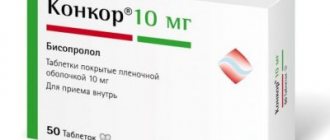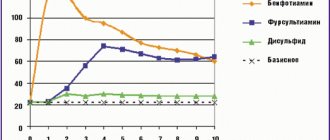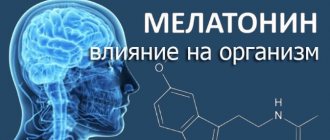Cardiovascular diseases are the leading causes of death among young people (from 25 to 64 years old) in Russia. The main insidiousness of this group of diseases is that they are often asymptomatic, and a person finds out that he has heart problems when it is no longer possible to help him. We talked with EuroMed Clinic cardiologist Olga Aleksandrovna TSURKAN about what cardiac diseases are most common, how they manifest, and what symptoms are recommended to pay attention to.
The heart is a muscular organ that “pumps” blood throughout the body. The heart muscle is called the myocardium, and it constantly works - on average, at rest the heart “pumps” 5 liters of blood per minute, and during intense exercise - more than 15 liters per minute! In order to carry out this work effectively, the coordinated work of the entire system is important: the main muscle (myocardium), atria, ventricles, and blood vessels. The myocardium must be constantly well supplied with nutrients and oxygen. If the functioning of one of the elements of the system is disrupted or the vessels supplying the heart with blood are clogged with cholesterol plaques, cardiac diseases develop.
Hypertonic disease
Hypertension or arterial hypertension (AH) is a very common condition associated with chronic high blood pressure. This disease can develop as a consequence of some other conditions (secondary hypertension), or on its own (primary hypertension).
Blood pressure is the pressure inside blood vessels called arteries. The blood expelled from the heart (about 60 ml) with one contraction stretches the aorta and large arterial vessels from the inside. The walls of the blood vessels expand under the pressure of blood and then narrow again. The strongest pressure on the blood vessels is recorded during heart contraction (systole) - this pressure is called systolic. When the heart relaxes (diastole), the blood pressure in the arteries decreases. This pressure is called diastolic.
In a healthy person, systolic blood pressure ranges from 100–140 mmHg. Art., and diastolic is about 70–80 mm Hg. Art. Normally, pressure numbers can fluctuate depending on a person’s condition: increase during physical or psycho-emotional stress, decrease during sleep.
The reasons why normal blood pressure is disrupted, in most cases, cannot be established. There are certain factors that increase a person's risk of developing hypertension. They can be divided into non-modifiable (which we cannot change) and modifiable.
Non-modifiable causes:
- Age. With age, the walls of large arteries become tougher and more rigid, which increases vascular resistance to blood flow, and therefore increases blood pressure.
- Hereditary predisposition. The genetic factor is considered to be the main factor in the development of essential hypertension. However, the genes responsible for the occurrence of this disease have not yet been discovered.
- Floor. Men are more likely to suffer from arterial hypertension.
Modifiable reasons:
- smoking;
- excess salt in the diet;
- excessive alcohol consumption;
- abdominal obesity (fat deposition in the abdominal area, “beer belly”);
- low physical activity;
- chronic stress;
- increased blood sugar;
- snoring, especially with pauses in breathing;
- changes in the lipid (fat) composition of the blood. The eradication of these “vices” of modern life is the basis for the prevention of not only hypertension, but also all cardiovascular diseases in general.
Symptoms of hypertension
- headache,
- dizziness,
- flashing “flies” before the eyes.
Most often, hypertension is not accompanied by any symptoms and is detected accidentally when measuring blood pressure or after the development of its complications, the most dangerous of which is stroke. Therefore, to prevent the development of hypertension, I recommend regularly measuring your blood pressure; if something worries you, consult a doctor immediately.
Against the background of a sudden increase in blood pressure, a hypertensive crisis may occur. accompanied by pathological changes in the brain and cardiovascular system against the background of autonomic disorders (chills, trembling, sweating, a feeling of a rush of blood to the head, a feeling of lack of air, etc.). The level of blood pressure at which clinical manifestations appear varies from person to person (in one patient it is 240/120, in another - 130/90 mmHg) - it depends on the initial level of blood pressure. If the patient is hypotensive, even a slight increase in blood pressure can cause the clinical picture of a hypertensive crisis.
If a hypertensive crisis is accompanied by intense chest pain, shortness of breath, loss of vision, impaired coordination of movements, vomiting, call an ambulance immediately! Such crises pose a danger to the patient’s life and require immediate reduction of blood pressure in a hospital setting. Complications of a crisis may include myocardial infarction, heart rhythm disturbances, bleeding, strokes, acute encephalopathy, acute renal failure, etc.
Causes of CVD development
Damages of the heart and blood vessels are multifactorial pathologies - they arise against the background of several predisposing conditions. The main cause of the vast majority of cardiac and cerebrovascular pathologies is an increase in the level of low-density lipoproteins (LDL) in the blood. An increase in their concentration leads to excess cholesterol, which forms plaques on the walls of blood vessels, narrowing their lumen.
An important role in the development of CVD is played by hereditary predisposition - those at risk are those whose immediate relatives (brothers, sisters, parents) have the corresponding disease. The likelihood of developing cardiovascular pathologies is increased by diabetes mellitus, kidney and thyroid diseases, infections (most often streptococcal - sore throat, scarlet fever, erysipelas, impetigo). In women, the triggering factor is conditions accompanied by hormonal changes: more often - menopause, less often - pregnancy.
The leading risk factors include lifestyle features and their adverse consequences:
- Physical inactivity. A sedentary lifestyle negatively affects the condition of the vascular walls and myocardium, increases the risk of thrombosis, and contributes to the occurrence of excess weight and diabetes.
- Diet errors. Increased salt consumption increases the risk of hypertension, excess sweets in the diet leads to diabetes, obesity, and increases LDL levels. Abuse of animal fats contributes to the development of atherosclerosis. Lack of proteins, microelements (potassium, magnesium, iron, copper, zinc, selenium), most vitamins negatively affects the condition of blood vessels and the heart, and myocardial function.
- Psycho-emotional stress. Acute stress is accompanied by the release of adrenaline, which increases the load on the heart, which can lead to myocardial infarction. Chronic stress is accompanied by increased levels of cortisol, which slows down the production of growth hormone. Deficiency of this hormone in adults indirectly provokes the development of CVD.
- Excess body weight is usually a consequence of the influence of the factors listed above. Obesity is a favorable condition for the occurrence of thromboembolism, increases LDL levels, and creates additional stress on the heart and blood vessels.
- Bad habits. Each episode of alcohol abuse leads to a decrease in the contractile function of the myocardium and impairs blood circulation. Tobacco smoking leads to increased blood pressure, provokes blood clots, the formation of atherosclerotic plaques, and increases the risk of arrhythmia.
Often one primary CVD leads to the development of another. Thus, atherosclerosis and arterial hypertension are the main causes of coronary heart disease, rheumatic carditis often leads to acquired defects, cardiac arrhythmias, and heart rhythm disturbances lead to thromboembolism of the arteries supplying blood to the limbs and internal organs.
Coronary heart disease (CHD)
IHD is a disease in which the blood supply to the heart muscle is disrupted, causing it to lack oxygen and nutrients. This usually occurs due to blockage of the main arteries of the heart by atherosclerotic plaques. Over time, they become more and more numerous, and when the lumen of the vessel is blocked by 60% or more, difficulty in blood flow occurs, oxygen starvation develops (hypoxia), which leads to myocardial ischemia and the occurrence of an angina attack, as well as the most dangerous complication of coronary artery disease - acute myocardial infarction.
Angina is a temporary, transient lack of blood supply to the heart muscle (myocardium). An attack of angina occurs when the lumen of the coronary artery, through which the heart muscle is supplied with oxygen, narrows. During an attack of angina, pain occurs that is pressing, squeezing or burning in nature, localized in the middle of the chest, behind the sternum, radiating upward (to the neck, lower jaw, teeth) or to the arms. Most often, pain occurs during physical or emotional stress and goes away with rest.
An attack of angina is a signal that the heart muscle is experiencing a lack of blood supply, the first “bell” that indicates that you need to urgently consult a doctor in order to prevent a more dangerous complication, such as acute myocardial infarction.
Acute myocardial infarction is the death of a section of the heart muscle due to disruption of its blood supply. This can happen due to blockage of the vessel by a thrombus - a blood clot that forms at the site of damage to the atherosclerotic plaque. As a result, blood stops flowing to the heart muscle, and this leads to myocardial infarction - necrosis, tissue death. Subsequently, a scar forms at this site.
Most often, during myocardial infarction, a person experiences acute pain (burning, pressing) behind the sternum or on both sides of the chest, often the pain radiates to the jaw, neck, back under the shoulder blades, and to the upper abdomen. The pain may appear in waves - sometimes intensifying, sometimes weakening. The pain may be accompanied by irregular heartbeat, weakness, cold sweat, decreased blood pressure, a feeling of lack of air, dizziness, fainting, and nausea. This condition lasts from 20 minutes to several hours. The above symptoms may appear in different combinations, not all signs need to be present. In some cases, myocardial infarction can occur without significant pain, with atypical pain sensations (similar to osteochondrosis or gastric ulcer, for example), and can also occur completely asymptomatically.
We must remember that acute myocardial infarction is a dangerous disease with a high mortality rate. Therefore, if you suspect yourself or a loved one has a myocardial infarction, do not delay, call an ambulance immediately.
Classification of CVD
The most common, socially significant CVDs include:
- Hypertension is a persistent increase in blood pressure.
- Atherosclerosis is the blocking of the arterial lumen by cholesterol plaques. Damage to the coronary vessels leads to coronary heart disease, the arteries of the head and neck to ischemia (lack of blood supply) to the brain, and large arteries of the legs to ischemia of the limb.
- Coronary heart disease is a disorder of the blood supply to the myocardium caused by obstruction (narrowing of the lumen) of the coronary arteries. The acute form of the disease is myocardial infarction.
- Cardiac arrhythmias are disturbances in heart rhythm and conduction.
- Inflammatory heart diseases are lesions of an autoimmune or infectious nature that affect the pericardial sac, muscle layer or internal connective tissue lining of the heart - pericarditis, myocarditis, endocarditis, respectively. Rheumatic carditis is most often recorded.
- Cerebrovascular pathologies are diseases of the blood vessels of the brain. An acute form of circulatory disturbance in the great vessels of the head and neck is ischemic stroke (cerebral infarction). If the integrity of the vascular wall is damaged or incompetent, a hemorrhagic stroke (bleeding in the brain) develops.
- Thromboangiitis obliterans is a progressive closure of the small arteries of the legs (first due to spasm, then associated thrombosis), accompanied by ischemia of the limb.
- Venous thrombosis and pulmonary embolism (PE) are complete or partial closure of the lumen of the veins or the main artery responsible for the blood supply to the lungs with a blood clot.
Significantly less common:
- congenital and acquired heart defects;
- heart tumors;
- systemic vasculitis;
- thromboembolism of the arteries of the systemic circulation (peripheral, mesenteric and others).
Heart failure
Heart failure is a pathology in which the heart cannot fully cope with its function, as a result of which other organs and tissues of the body do not receive enough nutrients and oxygen.
Heart failure is expressed as a discrepancy between the needs of the body and the capabilities of the heart. Normally, the heart muscle contracts with a certain intensity and “pumps” a large amount of blood. In heart failure, the organ cannot cope with its function. Most often, this is expressed by shortness of breath, weakness, and swelling. At the initial stage of development of the disease, heart failure manifests itself only during physical activity - when the heart is forced to work more intensely. At this stage, the disease can still be cured completely, so do not ignore even faint hints of symptoms and consult a doctor!
The more advanced the disease, the greater the disruption in all organs and systems that can result from a long-term lack of blood supply and nutrients.
Symptoms of Cardiovascular Diseases
Diseases of the heart and blood vessels in the initial stages are often asymptomatic and can manifest acutely - manifestations of a heart attack or stroke. The debut (or exacerbation of chronic pathology) is often preceded by nervous shock, overwork, physical exertion, and overeating. Most heart pathologies are accompanied by heart failure.
Symptoms of heart disease:
- Acute heart failure - cold sweat, sudden loss of strength, severe suffocation, cough with foam (a sign of pulmonary edema), cyanosis of the skin (cyanosis)
- Chronic heart failure - fatigue, poor exercise tolerance, shortness of breath, suffocation, dry cough (sometimes hemoptysis), scanty urination, edema, ascites.
- Myocardial infarction - acute chest pain radiating to the left shoulder, upper back, neck, chin (sometimes intense abdominal pain); shortness of breath, severe weakness, cold sweat; feeling of anxiety, fear of death.
- Rheumatic carditis – increased sweating, fever, signs of heart failure.
- Cardiac arrhythmia - palpitations, a feeling of “fading” of the heart, dizziness, fainting, manifestations of heart failure.
Signs of vascular pathologies:
- Arterial hypertension - heaviness, pain, pulsation in the back of the head; lethargy, dizziness, tinnitus, nausea; sensation of “floaters” before the eyes.
- Stroke - can begin gradually, with a weakening of muscle tone, numbness of certain areas of the face and limbs. Then lethargy and loss of sensitivity intensify to paresis, and the affected areas expand. Impairments in hearing, vision, speech, and coordination of movements may develop. General cerebral symptoms – nausea, vomiting, confusion, coma.
- Chronic cerebrovascular accident - attacks (transient ischemic attacks) are accompanied by more pronounced signs of arterial hypertension, transient disturbances in speech, hearing, vision, memory, unsteadiness of gait, and fainting. Symptoms disappear within 24 hours.
- Pathologies of peripheral arteries accompanied by ischemia (thromboembolism, thromboangiitis obliterans and atherosclerosis) - acute, unbearable pain, transient lameness, dry skin, change in its shade (at first pale, as it progresses - purple), the appearance of poorly healing ulcers.
- Deep vein thrombosis - a feeling of bursting pain in the affected limb, swelling, cyanosis of the skin, visible vascular network.
- PE – may combine signs of heart failure and stroke. Other symptoms are fever, pain in the right hypochondrium, skin rashes.
Acute CVD requires emergency medical care and intensive care. If you suspect these pathologies, you should immediately call an ambulance.
Atrial fibrillation
Atrial fibrillation (or atrial fibrillation) is a disease in which the rhythm of heart contractions is disrupted. Normally, the conduction system of the heart produces an impulse that causes the heart to contract at a certain frequency, in sinus rhythm. With atrial fibrillation, the sinus node stops working, the muscle fibers of the two upper chambers of the heart stop contracting rhythmically, but flutter, tremble, or contract uncoordinated. This leads to an irregular heartbeat, and as a result, blood flows unevenly into the chambers of the heart and can accumulate in them, resulting in the formation of blood clots (thrombi). The blood clot can travel to the brain through the bloodstream and cause a stroke. Uncontrolled atrial fibrillation increases the risk of stroke by about 5 times!
Symptoms of atrial fibrillation: changes in heart rate, shortness of breath, chest pain, weakness, dizziness, fainting. Often, with atrial fibrillation, a person does not feel any changes, and the disease is discovered by chance - during a preventive examination.
The number of diagnosed cases of atrial fibrillation is constantly growing. At the same time, new, modern drugs have now appeared that effectively fight this disease. The main thing is to contact a cardiologist in time.
Nowadays we no longer talk about individual diseases. As a rule, diseases of the cardiovascular system manifest themselves in a complex. It practically never happens that a person has just one thing, just arterial hypertension, for example. This is a single system, and one thing leads to another, each cardiac disease increases the risk of developing another one.
Methods for diagnosing the state of the cardiovascular system
Electrocardiogram (ECG) at rest. An ECG measures the heart rate and allows you to assess the condition of the heart muscle and the overall condition of the heart. This is usually a so-called screening examination - that is, one that is recommended to be performed regularly prophylactically, even in the absence of complaints. Unfortunately, it is not very informative due to its short duration, but we can “catch” the most serious pathological changes using an ECG.
If there are complaints or suspicion of diseases, it is recommended to perform more detailed, extensive tests.
ECG with physical activity (treadmill test). This procedure involves continuous ECG recording and blood pressure monitoring under conditions of stepwise increasing dosed exercise on a treadmill until a submaximal heart rate is reached (200 minus age). This makes it possible to identify possible ischemia (oxygen starvation) of the heart muscle, which is not detectable at rest, and to register existing heart rhythm disturbances (most often they lead to sudden deaths in athletes).
The study is carried out on a specially equipped treadmill. During the treadmill test, walking is actually simulated - a familiar type of exercise for any person. This is why most researchers consider the treadmill test to be a more physiological method of stress testing. Adhesive electrodes are attached to the chest and distal extremities to record ECG. Using a computer program, the slope of the track is adjusted, due to which the patient is given a certain physical activity with a gradual further increase. Simulates walking uphill. Along with the ECG, blood pressure is measured at certain intervals.
During the treadmill test, the patient must report the occurrence of pain and other unpleasant sensations. The study ends when a certain heart rate is reached, or due to a deterioration in the patient’s well-being. After stopping the procedure, the cardiogram and blood pressure readings continue to be recorded for about 10 minutes.
The value of any examination is characterized by the sensitivity and specificity of the method, which are quite high for the load treadmill test: according to various authors, the sensitivity of the treadmill test is 80–85%, the specificity is 83–88%.
The results of the treadmill test allow you to choose the most optimal treatment method - conservative or surgical, evaluate the effectiveness of therapy, give recommendations on household and professional physical activity, and create rehabilitation and training programs.
Methods for treating heart disease
To treat heart disease and vascular pathology, surgery may be required. The damaged vessel is replaced with an artificial one; in case of coronary artery disease, shunts are placed to bypass the coronary arteries to deliver blood to the myocardium. In case of heart defects, it is necessary to close the defects in the septa of the heart; prostheses are installed instead of deformed valves. If the heart is unable to generate rhythmic impulses, an artificial pacemaker is implanted.
Most heart diseases are treated conservatively. Antiarrhythmic drugs are prescribed, drugs to reduce blood pressure, regulate the tone of the coronary vessels, and improve the resistance of the myocardium to oxygen deficiency. For inflammation of the walls of the organ and blood vessels, antibacterial agents are used. Autoimmune processes are influenced by hormones.
After discharge from the hospital, treatment for heart disease cannot be considered complete. It is necessary to engage in prevention, under the supervision of experienced specialists, to adapt the heart to work under normal conditions.
Holter ECG monitoring
This examination is a continuous recording of heart function on an ECG throughout the day - using a special portable device that is attached to the patient. During the study, the patient is recommended to lead a normal lifestyle - for the most accurate result.
A holter is a small device that is attached to the patient’s belt; the sensors are attached to the chest. The procedure itself is automated; the patient does not need to do anything with the device. During Holter monitoring, the patient keeps a diary of activity and rest, and notes his well-being. After the device is removed, the data from the device and from the patient’s diary are entered into a special program in which this information is analyzed and a daily cardiogram is displayed.
Daily monitoring allows you to track the dynamics of a person’s heart over a longer period of time than with a conventional ECG or measuring blood pressure. As a result, we get a much more complete and reliable picture.
24-hour blood pressure monitoring (ABPM).
ABPM is an automatic measurement of blood pressure for a day or more (if necessary) at certain intervals, according to a given program (usually every 15 minutes during the day and 30 minutes at night). A cuff for measuring blood pressure is placed on the patient's shoulder, connected to a portable monitor of small size and weight (about 200 grams), which the patient wears on his belt. Measurements are carried out on an outpatient basis, during the patient’s normal activity. The system provides automatic measurement of pulse, systolic and diastolic blood pressure at set time intervals, on the basis of which average daily blood pressure and pulse values during the day and night are calculated, the degree of nighttime decrease and morning increase in blood pressure, response to physical activity and psycho-emotional stress is determined, the degree and duration of hypertensive load on target organs, variability of pressure and pulse during the day, episodes of hypotension are detected. For a more accurate assessment, the patient is asked to keep a diary in which he describes his well-being and complaints during the examination, his activities, physical activity, indicates the time of taking medications, notes the time of sleep and awakening. The only limitation for the patient during ABPM is the need to relax the arm on which the measurement is being taken for more accurate registration.
The technique is simple, painless and very informative. It increases the accuracy of assessing the true level of blood pressure, especially if the presence of initial, unstable arterial hypertension is suspected.
Ultrasound of the heart. During the examination, the doctor can evaluate the structural features of the heart, the condition of the chambers and valves of the heart, the aorta, the size of the heart cavities and the pressure in them, the thickness of the walls of the heart, the thickness of the myocardium, the contractility of the heart muscle, the speed of intracardiac blood flow.
Ultrasound of the vessels of the head and neck is a screening examination for the presence of atherosclerotic changes in the walls of arterial vessels. An ultrasound will clarify the condition of the arteries and veins supplying the brain, which will allow us to draw conclusions about the risk of developing cardiovascular accidents, as well as see problems in the blood supply to the brain, neck, head and spine.
Vascular ultrasound is especially recommended for men over 40 years of age - unfortunately, in this category of patients there are often changes in the condition of the vessels, which can be determined thanks to this study.
Diagnostics
The diagnosis of pathology of the heart or blood vessels is established based on the results of a clinical examination, a patient interview, and a number of instrumental and laboratory tests. The main instrumental methods used in the diagnosis of CVD:
- Electrocardiography (ECG) is an electrophysiological method used in the diagnosis of arrhythmias and myocardial infarction. A variation is Holter monitoring, which allows you to take readings throughout the day using a portable device.
- Echocardiography (EchoCG) is an ultrasound method of examining the heart that reveals both functional disorders and structural disorders (tumors, vegetations, defects, inflammation). It is also prescribed for suspected pulmonary embolism.
- MRI, CT (magnetic resonance, computed tomography) of the brain - used in the diagnosis of strokes.
- Ultrasound scanning and dopplerography of blood vessels - used in the diagnosis of chronic cerebrovascular accidents and peripheral vascular diseases.
Laboratory tests include:
- In the diagnosis of inflammatory heart diseases - biochemical study of the protein spectrum, general blood test, bacterial blood culture.
- In the diagnosis of atherosclerosis - a biochemical test for the level of cholesterol, LDL, triglycerides.
- If any CVD is suspected, a coagulogram is performed.
Modern equipment allows diagnosis without invasive procedures.
Blood tests
A cardiologist may recommend tests for cholesterol, glucose, and uric acid.
These indicators reflect the state of metabolism in the body: fat, protein, carbohydrate. Deviations from the norm for these indicators may indicate an increased risk of stroke or heart attack.
Symptoms that you should pay attention to
First of all, the pressure level. Increased blood pressure is always a sign that you need to see a doctor. Signs such as headaches, redness of the skin, tinnitus, and dizziness can indirectly indicate high blood pressure.
Chest pain, especially associated with walking and physical activity. Chest pain can also appear with increased blood pressure or stress. Such pain most likely indicates heart disease. The pain syndrome can be either constant or appear only during exercise, and subside with rest.
Shortness of breath is another fairly common symptom of heart problems.
It is important to understand that heart disease is often asymptomatic or with mild symptoms. And with age, the risk of their development increases significantly. Therefore, any man over 40 years of age and woman over 50 years of age should regularly visit a cardiologist for preventive care. Come at least once a year, perform an ECG, and see if everything is in order.
Most heart diseases, “caught” at the initial stage, are successfully treated. The contrast between how simple the prevention of cardiovascular diseases is and how serious the consequences they can have is simply amazing!
Why is it necessary to visit a cardiologist and do an ECG during pregnancy? Pregnant women who are registered at the antenatal clinic are sent for an ECG several times during pregnancy, and are also often recommended to consult a cardiologist. In addition, blood pressure is monitored at every doctor’s visit. What is this connected with? Pregnancy is always stressful for the body. During pregnancy, the load on the entire body and, in particular, on the heart increases. The volume of circulating blood increases, and the heart rate increases. This can provoke the development of hypertension, heart defects, and rhythm disturbances. Therefore, it is important to constantly monitor the woman’s condition in order to stop the disease in time and prevent the development of serious complications. It often happens that these conditions appear during pregnancy and disappear after childbirth.
Epidemiology
Cardiovascular (CV) diseases are a serious health problem worldwide due to their high prevalence and high mortality rate. In the world, about a third of all deaths occur from diseases of the circulatory system (85% of them due to heart attack or stroke), more than 75% occur in countries with low and medium levels of economic development. In Russia, the incidence of CVD is more than 19% in the structure of all diseases, mortality is 50%. Experts from the World Health Organization (WHO) predict a further increase in morbidity and mortality from CVD.
People of retirement age are more susceptible to vascular and heart diseases, but over the past decades these diseases have become significantly younger. Thus, coronary heart disease is often first diagnosed at the age of thirty, and from the age of forty it becomes the cause of premature death. Morbidity statistics show that in men the incidence and mortality from cardiovascular pathologies is 1.5 times higher than in women.
“Work pressure” is a harmful myth
There is an officially permitted maximum upper limit for blood pressure: 140/90 mmHg. Art. - this is the limit after which hypertension is already diagnosed.
But there is a widespread myth among the people that there is so-called working pressure - it can be above this limit, but it is believed that if a person feels well, then there is nothing to worry about, there is no need for treatment. This is a dangerous misconception!
The risk of complications from hypertension is equally high, regardless of whether you feel unpleasant symptoms or not! Yes, hypertension is often asymptomatic. But the risks of hypertensive crisis, stroke, heart attack, etc. remain. Therefore, the main indicator for prescribing treatment is the results of measuring blood pressure, and not the patient’s well-being. High blood pressure must always be reduced - this is the only way to avoid complications and serious consequences of hypertension.
Another common misconception is that medications to normalize blood pressure cannot be taken constantly, but only during episodes of high blood pressure. This is wrong. Arterial hypertension is a chronic disease. And in order for the patient’s condition to remain stable, medications must be taken as prescribed by the doctor - regularly. Agree, it’s not such a big price to pay for good health and reducing the risk of stroke and other complications - take a pill once a day!
Extrasystole - what is it? Extrasystole is one of the types of heart rhythm disturbances. Quite a lot of people are diagnosed with extrasystole on the ECG; this disorder is quite common. Only a doctor can determine how serious this is. Most likely, if you have been diagnosed with extrasystole, this is not a reason to panic; even a completely healthy heart can cause such a rhythm disturbance. But it is important that such arrhythmia can be provoked by serious heart diseases, that is, in this case, extrasystole will be one of the symptoms. That is why you should not ignore such “findings” and definitely need to be examined by a cardiologist.
Pain resembling osteochondrosis
Pain between the shoulder blades, in the neck, left arm, shoulder, wrist, even in the jaw can be a sure sign of not only osteochondrosis or myositis, but also heart problems.
Article on the topic
Stroke: risk factors, dangerous symptoms, first aid A symptom of angina pectoris may be the occurrence of such symptoms after physical activity or emotional shock. If pain occurs even during rest and after using special heart medications, this symptom may indicate an approaching heart attack.







